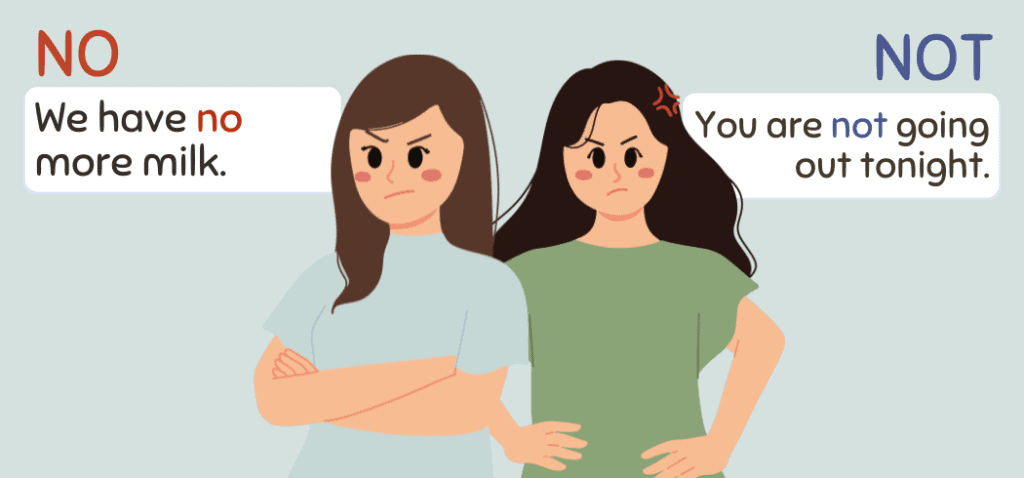Do you know the difference between no vs. not? No, probably not. (See what I did there?) But don’t worry because my guide will help you understand how the two words differ.
Read on to learn the meanings and functions of no and not. I’ll also show youexamples of how to use them in sentences properly. You can answer the worksheet I provided to test your knowledge and understanding.
No vs. Not
Both no and not are words that show negative sentences. Use no when you mean not any or not a/an. For example:
- We have no more milk.
- We have no time to talk.
Use not with an auxiliary verb or be to form the negative. For example:
- She is not as quiet as I thought.
- You are not going out tonight.
How to Use No in a Sentence
Use no when giving a negative response. For example:
- “Do you believe Stan?”
“No.”
No is also a determiner that means not any to modify a noun. For example:
- This dinner has no meat products or by-products.
No is also used before verbal nouns, specifically gerunds. For example:
- No smoking in the balcony area.
- No playing in the street.
How to Use Not in a Sentence
We use not with a clause to give a negative response and modify a verb or adjective. For example:
- Why did you not invite Miranda to the party?
Not modifies invite, showing the opposite of the action. Here are more examples of sentences with not.
- I am not cooking lunch today.
- I do not enjoy skiing.
- “I don’t like long movies.”
- “Why not?”
In the last example, not is used in a question but still acts as an adverb. Why not also means why don’t you like long movies?
Is “No Good” Grammatically Correct?
No good is a grammatically correct adjective phrase. It means that something is of no use or value. For example:
- It’s rude to say someone is no good.
- The no-good TV stopped working after one week of use.
Not good is also a grammatically correct phrase, which means mediocre or bad. For example:
- Chocolate is not good for dogs.
- That baked chicken was not good.
Is It “Not in Use? or “No in Use”?
The correct phrase is not in use, which means not being used. For example:
- Please turn off the lights when they’re not in use.
Is “Not” a Noun?
No. Not is an adverb because it modifies a verb or adjective. Some examples include not happy and did not stop.
Is “No” an Adjective?
No can be a determiner or adjective because it modifies nouns. Some examples include no tears, no chairs, and no water.
Final Word on No vs. Not
Both no and not are negative modifiers or response markers, but there’s a huge difference in how we use them in sentences. Remember:
- No modifies a noun and can be used to give a negative response.
- Not modifies a verb or an adjective and can be found within a clause as a negative response.
